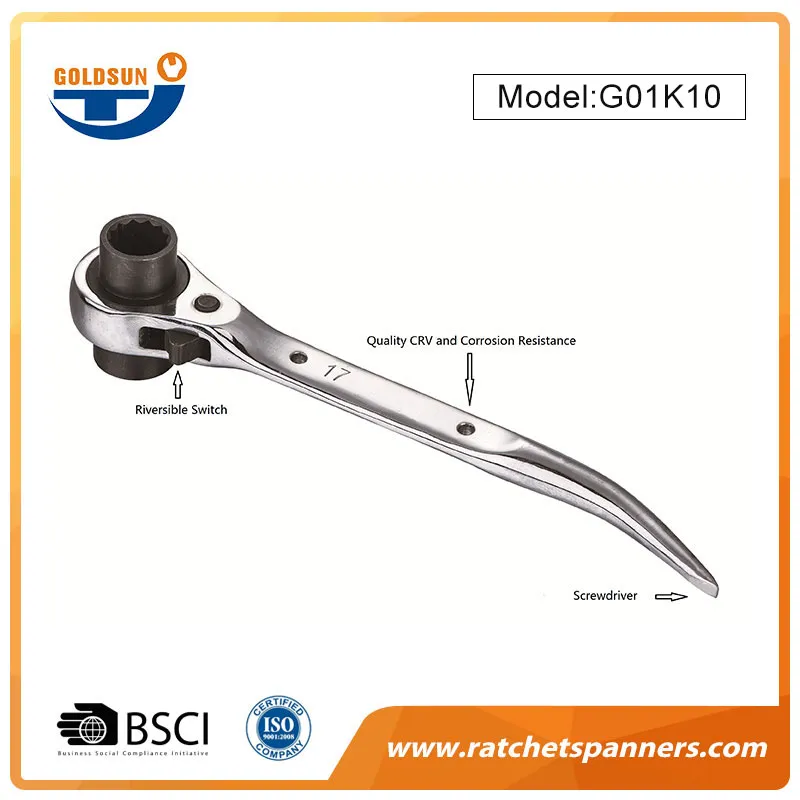How to Choose and Use a Pointed Tail Socket Ratchet Wrench
2024-10-24
When it comes to selecting the right tools for your mechanical projects, understanding your options is key. The Pointed Tail Socket Ratchet Wrench is a popular choice, but how do you know which one to choose and how to use it effectively? This blog will guide you through the selection process and offer tips for optimal use.
Choosing the Right Pointed Tail Socket Ratchet Wrench
1. Size and Socket Compatibility: Determine the sizes of the sockets you frequently use. Most pointed tail socket ratchet wrenches are designed to be compatible with standard socket sizes, so look for one that includes a range of sizes or the specific size you need.
2. Material Quality: Opt for a wrench made from durable materials such as chrome vanadium or high-carbon steel. A high-quality wrench will withstand heavy use and resist corrosion.
3. Ratchet Mechanism: Check the ratcheting mechanism for smoothness and reliability. A well-designed mechanism allows for easy engagement and disengagement, making your work more efficient.
4. Handle Design: Look for a handle that provides a comfortable grip and good leverage. The pointed tail should feel secure in your hand, allowing you to apply the necessary torque without slipping.
5. Length: Consider the length of the wrench. A longer wrench can provide more torque, while a shorter one is easier to maneuver in tight spaces.
How to Use a Pointed Tail Socket Ratchet Wrench Effectively
1. Select the Right Socket: Choose the appropriate socket size for the fastener you are working with. Ensure it fits snugly to prevent stripping the fastener.
2. Attach the Socket: Securely attach the socket to the wrench by sliding it onto the drive and ensuring it clicks into place.
3. Set the Direction: Most ratchet wrenches have a switch that allows you to set the direction of rotation. Make sure it's set to the correct direction for loosening or tightening.
4. Position the Wrench: Align the socket with the fastener and apply a firm grip on the handle.
5. Ratchet Motion: Begin turning the wrench in the desired direction. The ratcheting mechanism allows you to maintain contact with the fastener while moving the handle back to the starting position, significantly speeding up the process.
6. Check Tightness: After tightening a fastener, always check its tightness with a torque wrench if applicable. This ensures you haven't overtightened or left it too loose.
Maintenance Tips
- Clean After Use: Wipe down the wrench to remove dirt and debris, which can accumulate and affect performance.
- Store Properly: Keep the wrench in a protective case or toolbox to prevent damage and ensure longevity.
- Lubricate: Periodically apply a light lubricant to the ratcheting mechanism to keep it functioning smoothly.
Choosing and using a Pointed Tail Socket Ratchet Wrench effectively can greatly enhance your efficiency and effectiveness in mechanical tasks. By selecting the right size, material, and design, and following best practices for use, you can ensure that this versatile tool becomes an essential part of your toolkit. Whether you're a professional mechanic or a DIY enthusiast, mastering the pointed tail socket ratchet wrench will help you tackle a variety of projects with ease.



